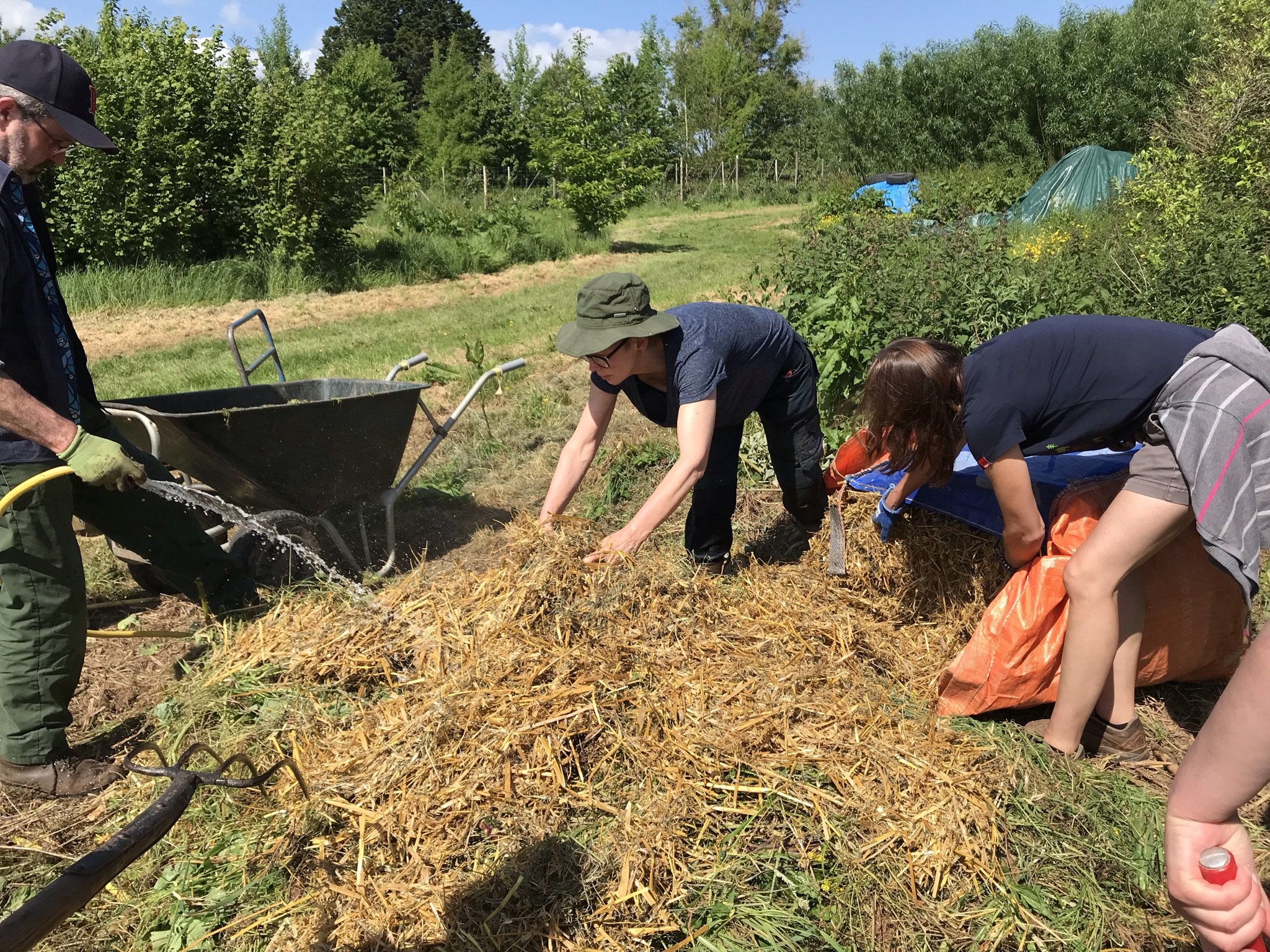Lettuce and spring onions as companion plants in Henri’s field, Schumacher College.
Jane Elliott
The weather was glorious in Devon for the last weekend in May, and it was lovely to be mainly learning (and eating) outside. We were on a course about organic gardening for soil health on the Dartington Estate. It was inspiring to see ‘Henri's field’ which is a mixture of some forest garden areas and a crop rotation system. One of the key messages was that soil health is vital for the healthy growth of vegetables. This may seem an obvious point to make, but much of modern agricultural practice has lost touch with the importance of the soil and all the microbes and other critters within it.
The green revolution has been successful in improving crop yields. However, this has been accomplished by focussing on the chemistry that is needed to boost growth and reduce pests, rather than taking a more holistic view that recognises the importance of the biological web of life within the soil. For example, it is the microbes within the soil that work in harmony with the plant roots to enable the plants to absorb the minerals and nutrients needed from the soil. Although soil is only about 5% organic matter (with the rest made up of air water and minerals), it is the organic matter that is vital to the soil food web. One way to assess the quality of the soil microbiome is to look at the roots of a plant. If roots are pale and white it is unlikely that they are supporting multitudes of microbes, whereas if roots are coated with a fine layer of brown/red soil this is a good sign that microbes are at work.
The main method to improve the health of your soil is to add organic matter or compost. Organic matter will help a clay soil to be more workable and drain better and will help a sandy soil retain more moisture. An important element of the course at Dartington was therefore understanding more about the different ways of making compost and mulch. Participants were very honest in sharing that many of us just have a heap of weeds in a corner which we call a compost heap, and which we gradually add to every time we do some gardening. This approach will usually result in some useable compost after a couple of years but there are more effective ways of making compost. The technique that we tried in a corner of Henri's field at Schumacher College was to make a layered compost pile with alternate 'brown' i.e. carbon rich materials and 'green ' i.e. nitrogen rich materials. If the heap is at least one cubic meter square and is made in one go then it is much more likely to generate the heat needed for hot composting. This is a much speedier approach to compost making and should result in useable compost within about six months.
Course tutors Colum Pawson and Jane Gleeson demonstrating compost
The 'brown' layer that we used to construct our new compost heap was straw but dried grass, shredded paper and cardboard or any dried organic material that is brown in colour can be used as the brown layer. Starting with a brown later it is also good to liberally water each later of the compost heap to ensure that it doesn't dry out. Jon enjoyed wielding a hose and ensuring that everything was given a good soaking. For the microbial life to do its work efficiently in digesting and breaking down the organic materials the microbes need moisture, oxygen, and warmth. It was also interesting to learn why it's a good idea to keep a separate pile of composting leaves as mulch - leaves tend to break down more slowly and are broken down by fungi rather than by microbes so it is best not to add them in quantity to a compost pile.
Adding a layer of brown carbon-rich straw to the compost pile
Given that they share an awareness of the importance of soil health and organic practices, It was good to get some insights into how the growing methods used at Schumacher College differ slightly from the Charles Dowding ‘no-dig’ method. Whereas Dowding uses a very large amount of compost on his soil each year, and argues that crop rotation is not strictly necessary, at Schumacher they find it impractical to make the quantity of compost needed, given the size of their growing area, and so prefer to practice crop rotation and to use green manures as part of the rotation. However both approaches focus on the need to have something growing in the soil for as much of the year as possible.
Useful resources:



